Dokkyo Medical University Saitama Medical Center
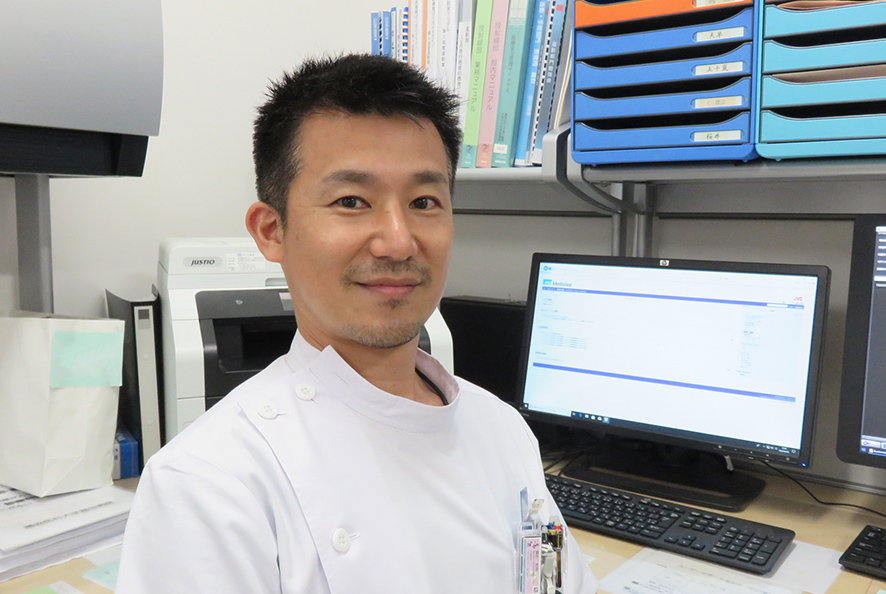
Mr. Kazuaki Suwa Chief of Radiology Department

Medical monitor CL-S300
Network quality management software PM Medivisor
Improving the efficiency of image reading
Reducing the load on the quality management
Dokkyo Medical University Saitama Medical Center is currently operating as a regional core hospital with 11 departments of internal medicine and 18 departments of general surgery. They have been using our medical monitors and the network quality management software for a long time, and this time "i3 series" 3 megapixel 21.3 inch color monitors CL-S300 were newly installed in the image reading rooms. We interviewed Mr. Kazuaki Suwa, Chief of Radiology Department, Saitama Medical Center, about the background, system and effectiveness of the installation.
Background of installation
Reliable quality and support
Quality assurance achieved by a network management
Q:Would you like to tell us why you chose JVC's monitors?
A:Because of the high quality and fast support. We have been using JVC’s monitors with no troubles such as breakdowns since 2006, and quick respond to technical requests is very helpful. Regarding the image quality, radiologists compared monitors from various manufacturers, and JVC's monitors stood out because images were clear, and the screen did not cause much eye strain. There is one more big reason why we chose JVC. Since the number of monitors increased as the new ward was established, central management by one network quality management software "PM Medivisor" is very important.
Q:Where are you using those monitors and for what purpose?
A:This time, we have installed monitors in image reading rooms, radiography rooms, and medical office. Including monitors that we installed in examination rooms and outpatient ward for electronic medical records last time, there are more than 100 units of JVC’s monitors in the hospital now.
Installed System
8 units of 3 megapixel 21.3 inch color LCD monitors CL-S300 have been added to image reading rooms, medical office, and radiography room.
The network quality management software PM Medivisor is also installed to centrally manage more than 100 units of JVC’s monitors in various departments.
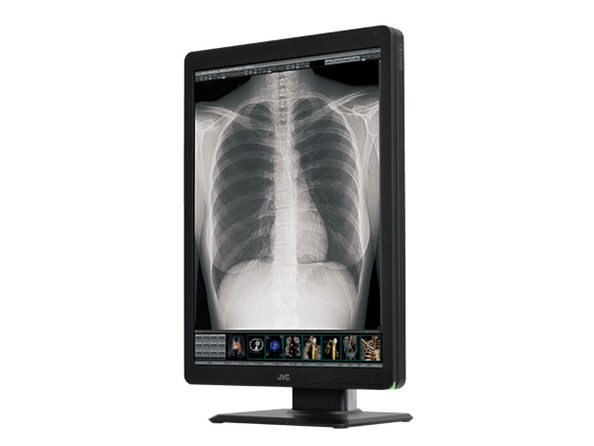
3 megapixel 21.3” color monitor CL-S300
Features of CL-S300
● Highly accurate reproduction of grayscale gradation defined by DICOM Part 14 during monochrome image diagnosis without being affected by aging.
● Dynamic Gamma function (Patent No. 6277984) recognizes color images automatically to provide optimized contrast, brightness and gamma. No user intervention is required.
● A contrast ratio of 1500:1 delivers crisper images and gives radiologists confidence in the image interpretation to improve work efficiency.

Features of PM Medivisor
● Monitors installed anywhere in the hospital can be centrally managed, greatly improving management work efficiency.
● Centralized management of calibration, acceptance/constancy test, history, basic information, operating time, etc.
Effectiveness of installation
Image reading work efficiency improved by high contrast and color display
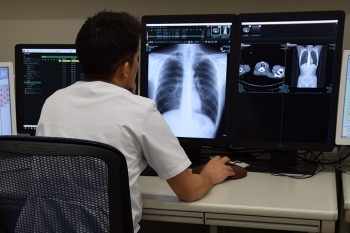
Q:What kind of monitor should be used for image reading?
A:Of course, it must be a medical monitor, but in addition it has to provide high image quality and contrast. The CL-S300 has a significantly improved contrast ratio of 1500:1 compared to a conventional monitor with a contrast ratio of 900:1, leading to a clear display. If only desiring for high luminance, it is too dazzling to see, so we also require of high contrast ratio.
Q:You replaced the monochrome monitors to color monitors (CL-S300). Do you feel any different?
A:In the past, there was only one set of color monitor, so color images were interpreted by one person. With the increase of color monitors in this time, more doctors can read color images of CT, endoscope and RI. Since various other factors also influence the final diagnosis besides image information, with the same display characteristics color monitors have an advantage over monochrome ones.
Network quality control software helps reduce the burden of quality control
Q:How do you think about the network quality management software “PM Medivisor”?
A:Very good. Because it can help us to check the operating time, maximum luminance and gradation characteristics of more than 100 monitors in real time, which greatly reducing our burden. Through PM Medivisor we can also centrally manage the quality assurance data such as acceptance tests and periodic tests on each monitor, and easily check the status of monitors to raise awareness about quality assurance and maintenance for monitors. Besides daily check, constancy test must be conducted once a year. But it’s not easy for a large scale of 100 monitors, so we can make an annual plan when and how to conduct tests. Since "PM Medivisor" can record results of the constancy tests, we would like to further utilize the function of "PM Medivisor" in making an annual plan.
Reliable quality
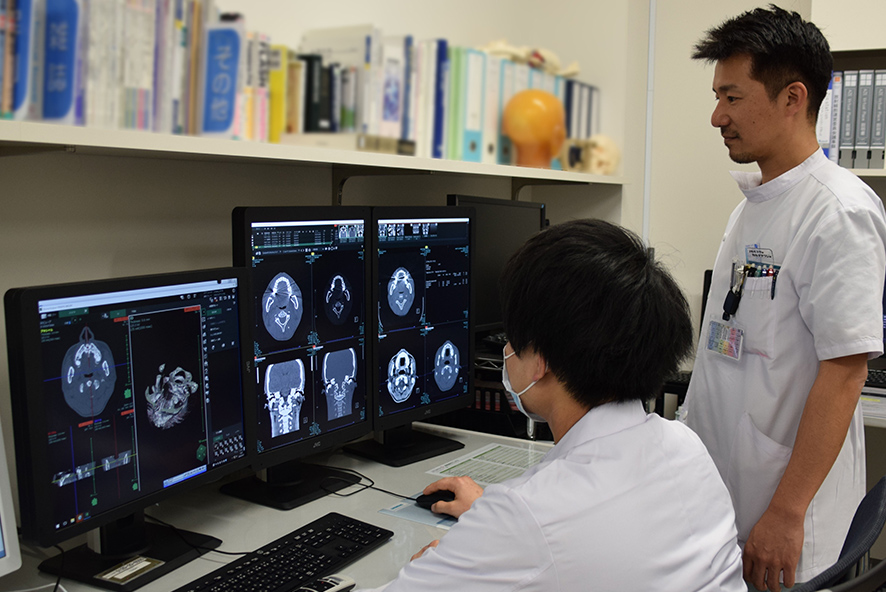
Q:How is the quality of JVC’s monitors?
A:JVC’s monitors are really good quality and there are almost no troubles. The most afraid thing is breakdown during work. If monitors break down while taking an image of CT or during image reading, the work will be significantly delayed, but as far as I know, we have not experienced any major troubles or failures, so I think JVC’s monitors are excellent quality.
Expecting unified display characteristics of medical monitors
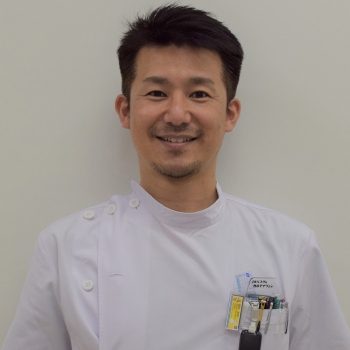
Q:What are the requirements for medical monitors in the future?
A:I think the challenge is to unify the display characteristics of medical monitors. For example, there are not guidelines for display characteristics such as gradation (gamma) of endoscopic devices and ultrasound devices. On the other hand, console monitors on angiography or fluoroscopy are calibrated to gamma 2.2. When images taken in different gamma on each device are viewed on monitors for diagnosis, images cannot be displayed accurately resulting in various problems. As a radiological technologist, I would like that display characteristics of all medical monitors used for console to image reading can be unified to comply with DICOM GSDF. It is not just a job for medical monitor manufacturers, but also needs the cooperation with the industry. The standardization of color temperature and gradation characteristics are expected to be laid down in the guidelines for color images as well, so that images can be displayed in common characteristics in all situations and facilities. The CL-S300 is equipped with a dynamic gamma function that can display DICOM GSDF for grayscale images and gamma 2.2 for color images. We are looking forward to its effectiveness.
User’s profile
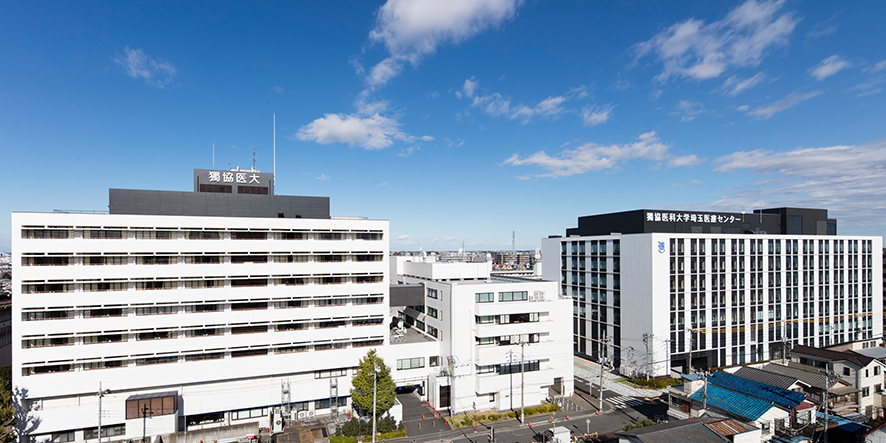
Dokkyo Medical University Saitama Medical Center currently has 923 beds as the largest hospital in the eastern area of Saitama Prefecture with 11 departments of internal medicine and 18 departments of general surgery. In 2018, the new ward with 411 beds and 22 operating rooms was established, operating nearly 11,000 surgeries per year. The hospital will continue to make efforts to improve the surgery-centered medical care.
Dokkyo Medical University Saitama Medical Center
https://www.dokkyomed.ac.jp/dmu/english/
.thumb.480.300.png)
